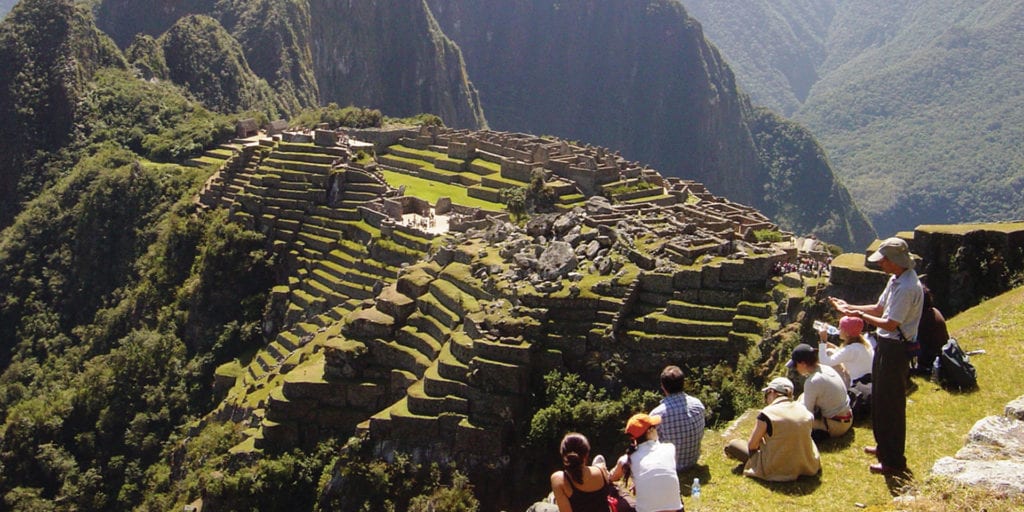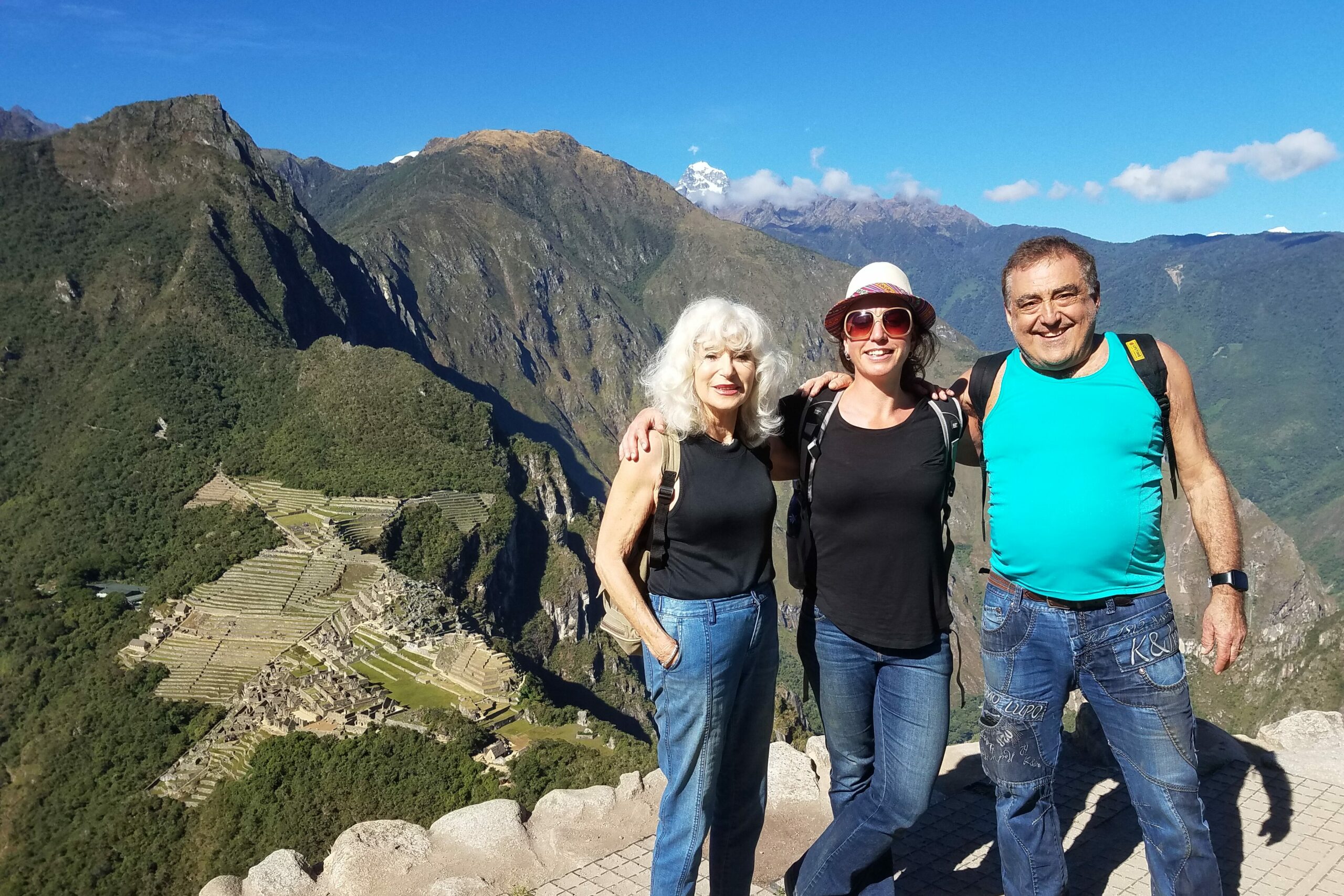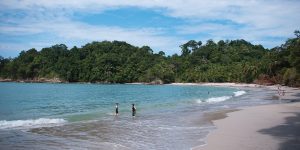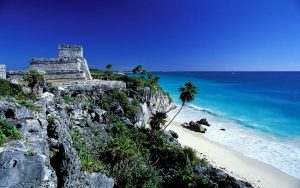What's Included in This Guide?
Machu Picchu is the number one priority for most first time travellers to South America. But the logistics of getting there, entering the ruins and getting around are only getting more complicated! Gone are the days of simply making your way to the entry and purchasing a ticket. Visiting Machu Picchu now requires concerted organisation and planning. We’ve put together this comprehensive guide to help you plan your holiday to beautiful Machu Picchu. It’s worth the effort; we promise!
When To Visit Machu Picchu
Machu Picchu is open every day of the year and can be visited all year around. However the best time to visit is during the dry season (late March to early November).
The peak season is June, July, and August when the weather is at its best and North American and European summer holidays see huge numbers of tourists at Machu Picchu every day. The month of June is also Inti Raymi, South America’s second largest festival after Rio’s Carnival, when thousands of people converge on Cuzco to see this spectacular cultural event. Immediately before and after Inti Raymi, Machu Picchu is always very busy.
If you are flexible and can choose your travel dates, we recommend visiting Machu Picchu during the shoulder season months of May, April, September, and October. You’ll get the benefits of dry season weather – but avoid the crowds of peak season.
The rainy season (November to March) is low season in the Peruvian Andes and although you will almost certainly need a rain jacket at times, there will be plenty of sunny moments to enjoy. February is the wettest month of year, when the Inca Trail is closed for maintenance.

What altitude is Machu Picchu?
Many people are surprised to learn that Machu Picchu is much lower in altitude than Cuzco, or even the Sacred Valley of the Incas. The citadel sits at 2,340m above sea level, while Cuzco and the Sacred Valley sit at 3,400m and 2,800m respectively.
How do you get to Machu Picchu?
There are only two ways to reach Machu Picchu. Either by rail into Aguas Calientes, or by foot along the Inca Trail.
During the dry season, trains depart from Poroy Station in Cuzco and travel via Ollantaytambo in the Sacred Valley to reach Aguas Calientes, a journey of around 3 hours. Passengers can alight either in Poroy or in Ollantaytambo. Since we usually recommend passengers spend a few nights in the Sacred Valley to aid with acclimatisation, most of our clients board in Ollantaytambo for the 90 minute journey to Aguas Calientes. During the rainy season, a bimodal service replaces trains between Poroy and Ollantaytambo.
The other way to reach Machu Picchu is along the famed Inca Trail, either via the Classic 4-day route, or the 1-day Inca Trail Express. You’ll find more information about hiking to Machu Picchu below.

Rail Journeys to Machu Picchu
There are several different train options for passengers who wish to arrive by rail into Aguas Calientes. We generally book the PeruRail Vistadome service for our clients unless you specify an alternative. It is possible to combine two different rail options. For example, the VIstadome on the way to Machu Picchu and the Hiram Bingham on the return, as a lovely way to cap off your Machu Picchu experience.
PeruRail Expedition Train is the most economical option but still very comfortable, with panoramic windows and informative audio commentary en route.
PeruRail Vistadome Train is our recommended option as it is only marginally more expensive than the Vistadome but offers onboard snacks and a drink.
Belmond Hiram Bingham is the most exclusive and luxurious option. Passengers have access to the elegant dining car, the bar car, and the observatory, where you can take in the unmatched scenery in the open air while sipping on a traditional Peruvian cocktail and listening to live local music.
InkaRail Voyager is the most economical option operated by Inka Rail and features panoramic windows. There are snacks for sale on board.
The InkaRail Voyager Premium features more comfortable seats, wider windows and free snacks and beverages on board.
Another step up from the Voyager Premium, InkaRail 360 offers huge panoramic windows, snacks and drinks on board and an outdoor observatory wagon.
The InkaRail First Class is a luxury services offering maximum comfort and space onboard. Passengers enjoy access to the Observatory-Lounge, gourmet menu, bar and an outdoor balcony.
InkaRail Private is an exclusive wagon in which you will enjoy a beautifully decorated lounge with wide seats, bar, premium beverages, gourmet menu, and live music. This service includes a private bus to the citadel of Machu Picchu after disembarkation.

Hiking the Inca Trail to Machu Picchu
The Incas built a highly advanced network of nearly 40,000 thousand kilometres of trails to connect the distant corners of their vast empire that stretched from Quito in Ecuador, to Santiago in Chile, and east to Mendoza in Argentina. The most famous section of this network is the 42km route that winds through the Sacred Valley and connects the important Inca archaeological sites of Runcuracay, Sayacmarca, Phuyupatamarca, Wiñay Wayna and, of course, Machu Picchu.
The Classic Inca Trail is one of the world’s most iconic treks and a classic bucket-list item for many travellers. It’s a four-day adventure that takes you through some of Peru’s most captivating scenery to arrive at the mountain citadel of Machu Picchu. Strictly limited to 500 people per day (including guides and porters), it’s essential that you plan and book well in advance, particularly during the peak season of June to September. Campsites are simple but comfortable with thermarest mattresses and cosy sleeping bags to keep out the mountain chill.
The trek is moderate to challenging, with a lot of steep uphill and downhill sections and uneven steps. The highest point of the trek is Warmiwañusca Pass at 4,200m, which you will reach on the second day. The most difficult day is generally considered to be day three, when you will cover 16km and hike over two high passes. Most people of reasonable fitness will be able to complete the Inca Trail. The most important part of your preparation is to allow plenty of time to acclimatise to the altitude prior to commencing the trek.
The Inca Trail Express – the perfect compromise!
If you lack the time (or the stamina) for the Classic Inca Trail, the Inca Trail Express is a great compromise. Travel by train to Km 104 where you disembark with your guide. Visit the ruins of Chachabamba before beginning the three-hour ascent to Wiñay Wayna, an important spiritual site for the Inca. From here, the hike takes you across the ridge above Machu Picchu and then down to the famous Intipunku (Sun Gate), where you will have the incomparable experience of seeing Machu Picchu laid out before you. Take some time to soak up this classic vista before heading down to Aguas Calientes to overnight. Return to Machu Picchu in the morning, fully refreshed and ready for a guided tour of the ruins.
An additional 200 permits per day are issued for the Inca Trail Express, so this is a good alternative if you have missed out on the four-day option.

Machu Picchu Entrance Ticket Types
There is now a staggered system for entry to Machu Picchu, designed to better regulate the flow of visitors into the site. Nine entry slots are allocated per day, commencing at 6am (enter between 6 and 7) and with the last entry at 3pm (entry between 2pm and 3pm), for a maximum of 2.5 hours. The site closes at 5:30pm and all visitors must depart at this time.
There are three circuits with a variety of sub-routes: Circuit 1 (the Panoramic circuit); Circuit 2 (Inca City circuit) and Circuit 3 (Royal circuit)
The Classic Route (Circuit 2A) is the most comprehensive route and is recommended to passengers that are in good shape and health. This circuit lasts 2.5 to 3 hours and allows you to capture the iconic photo of Machu Picchu from the platform below the Guardian’s House. The route continues through the urban and religious sector of Machu Picchu including the Temple of the Sun, the Main Temple, the Temple of the Three Windows, the Sacred Rock, the Temple of the Condor, the Water Fountains and the agricultural sector.
Climbing Huayna Picchu
Tickets for Huayna Picchu are limited to only 400 per day and must be purchased in advance.
You will have a maximum of 3 hours to climb to the top of Mount Huayna Picchu (2,693m). The trail is steep and parts of it include several sections of stone staircases carved directly into the mountainside.
It is a quite challenging hike that affords encompassing views of Machu Picchu and the surrounding mountain ranges. Reaching its peak is a great feat and will be an adventure. Once at the top, the views of Machu Picchu and its surroundings are spectacular and unique. In the mountain you can find Inca remains as viewpoints, chambers and platforms. Also, there you can observe the magnificent Temple of the Moon. You will follow Circuit number four to exit the ruins after climbing Huayna Picchu.

Climbing Machu Picchu Mountain
Machu Picchu Mountain is a spectacular yet overlooked option at the Machu Picchu citadel. It is also limited to only 400 tickets per day, but since it is less popular than Huayna Picchu, you have a better chance of securing a spot even if you book quite late. Unlike Huayna Picchu, the Machu Picchu Mountain trek is wide and well-marked. It is about a 3-4 hour hike roundtrip and the maximum elevation reached is 3,080m.
Make your way to the warden’s hut where you will need to show your passport & ticket. From here, the trail follows a fairly even ascent of about 30 – 35 degrees gradient for about one hour. Gradually and steadily gaining altitude, the views of Machu Picchu and the surrounding mountains become ever-more impressive. There are several view and rest points along the way. As the trail gets closer to the base of Machu Picchu Mountain, the steps become steeper, narrower and more challenging. Winding on for another 30 minutes or so, the trail passes through a stone gateway, before following a narrow mountain ridge to the summit. At the viewpoint you’ll enjoy awe-inspiring views of Machu Picchu, Huayna Picchu and Putucusi Mountains. The decent follows the same route but takes about 20 – 30 minutes less.
How long do you need to spend at Machu Picchu?
Because the entries are now so restricted, we recommend booking two separate visits to the Citadel. On your first entry you can have the guided tour and complete the longest circuit. On your second visit you may enter without a guide – and can opt to add one of the optional hikes such as Huayna Picchu or Machu Picchu Mountain. Alternatively, take a different circuit at your own pace and enjoy the gorgeous scenery.
The area around Machu Picchu including Cuzco, and the Sacred Valley of the Incas is exceptionally beautiful and well worth spending time in. We recommend an unhurried itinerary that will allow you to explore all the incredible sites, acclimatise gently to the altitude and appreciate the culture of the local Quechua people. Our Classic Machu Picchu itinerary is a great place to start planning.
How much does it cost to visit Machu Picchu?
There are lots of factors which will influence how much your trip to Machu Picchu costs. The entry fee to the ruins is only a small part of the total cost. You also need to factor in your travel between Cuzco and the Sacred Valley, your train tickets, the cost of the necessary minibus transfers between Aguas Calientes and the entry to the Citadel and the cost of hiring a local guide (now mandatory) for a tour.
The cheapest way to visit Machu Picchu is on a shared, full day tour from Cuzco. If you take this option you are likely to spend around USD$500 per person on road transportation, train tickets, touring and entry fees. But visiting Machu Picchu this way is not recommended. After all, you have flown all the way from Australia to experience this magical site. Why rush it? If you opt for a more leisurely experience and purchase two entries, a privately guided tour, stay overnight in a moderate hotel in Aguas Calientes and travel on the Vistadome train, you can expect to pay closer to USD$800 or more. And if you want the most luxurious options available, including overnight accommodation at Belmond Sanctuary Lodge and Hiram Bingham train tickets, your trip to Machu Picchu can cost thousands of dollars.
As you can see, visiting Machu Picchu is much more complicated than it sounds! There are a lot of factors to consider. We recommend getting in touch with one of our Peruvian Travel Specialists today so we can arrange a seamless experience for you and your family.





















































